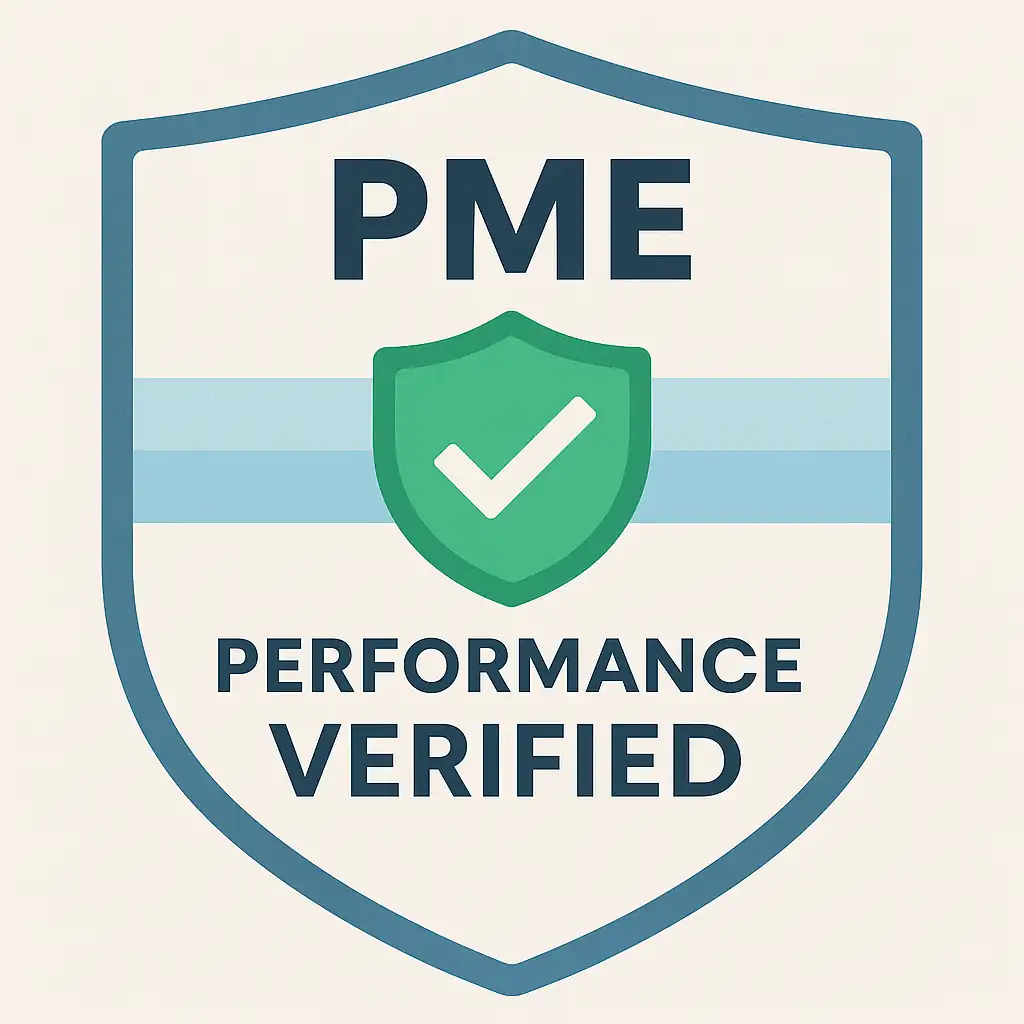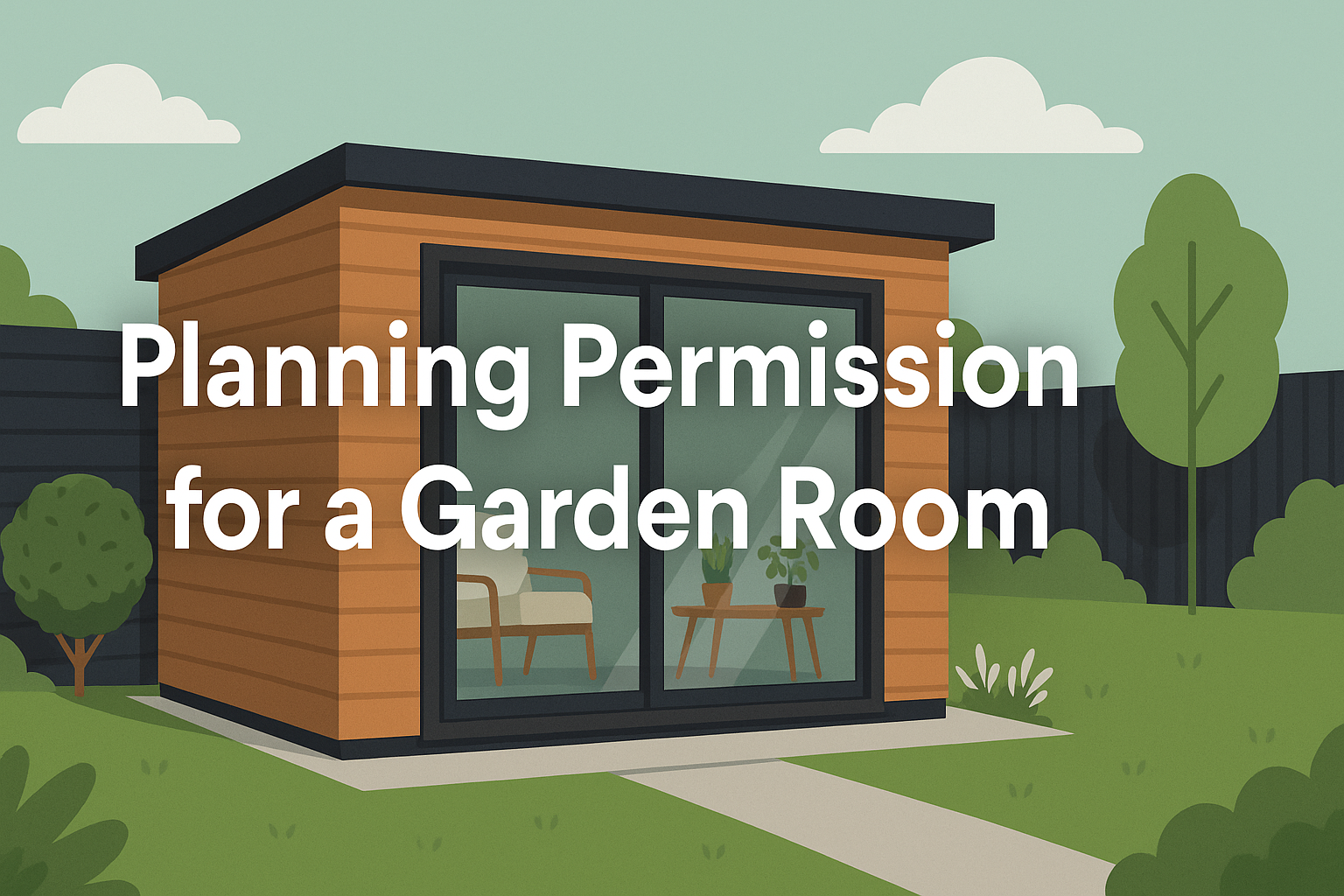Share this post:
- What size/height is allowed without planning permission
- Boundary rules (2.5m near a boundary), roof types & % of garden coverage
- Bathrooms, plumbing & when “annexe” use needs consent
- How to apply (Full Planning or Certificate of Lawfulness)
Authoritative sources: Planning Portal · GOV.UK
Need planning advice fast?
Get clear answers on extensions, drawings, and permissions without the stress.
What counts as a garden room?
“Garden room” usually means a detached outbuilding in your rear garden: home office, gym, studio, hobby space or chill-out room. Under planning law, most fall under the outbuildings rules. The big test is use — PD expects “incidental” uses (office, gym, playroom) rather than a self-contained place to live.
Permitted Development basics (when you may not need permission)
Most houses have PD rights to build outbuildings without a full application, provided you meet the limits in Class E of the GPDO (summarised below). Flats/maisonettes have no PD for outbuildings.
- Outbuildings must be within the curtilage of the house and for incidental use (not primary living accommodation).
- They must not sit forward of the principal elevation (not in front of the house), and in some designated land, not to the side.
- Total area covered by outbuildings + extensions must not exceed 50% of the garden (original curtilage, excluding the house itself).
For the official wording and diagrams, use the Planning Portal.
Key PD limits: size, height & boundaries
- Height (overall): up to 4.0m with a dual-pitched roof; 3.0m with any other roof.
- Eaves height: max 2.5m.
- Within 2m of a boundary: overall height must be ≤ 2.5m.
- Raised platforms: decking/raised areas over 0.3m high are not PD with an outbuilding.
- Balconies/verandas: not permitted under PD.
- Coverage: outbuildings + other additions must not exceed 50% of original garden.
When planning permission is required
- You exceed the height limits (e.g., 2.8m within 2m of a boundary).
- You plan to put it in front of the house (forward of principal elevation) or in restricted side locations on designated land.
- You want a self-contained annexe (sleeping, kitchen) — that’s not incidental use.
- You’re on Article 4 land where PD rights have been removed.
- The property is a flat/maisonette (no PD for outbuildings).
If you’re right on the threshold and want certainty, apply for a Lawful Development Certificate (LDC) to confirm PD status on paper. Buyers’ solicitors love it.
Bathrooms, plumbing & “annexe” use
A WC or basin for a gym/office can be acceptable as incidental use. But once you introduce sleeping accommodation or a kitchen, councils often treat it as an annexe or separate dwelling — usually needs planning permission and stricter standards.
Conservation areas, listed buildings & Article 4
Designated land (conservation areas, AONBs, National Parks, the Broads, World Heritage Sites) and listed buildings have tighter controls. Side outbuildings may not be PD; size/placement can be restricted; and details may be scrutinised for heritage impact.
How many garden rooms can you have?
There’s no fixed number in PD — the limit is coverage and compliance with height/position rules. Multiple small structures are possible if the combined footprint stays within the 50% garden limit and all buildings remain incidental to the main house.
Not sure if your idea fits Permitted Development?
We’ll check your project against PD rules and let you know if you need a full planning application.
How to apply (Planning or Lawful Development Certificate)
- Decide your route: PD fit? → apply for an LDC (Proposed) to confirm lawfulness. Not PD? → apply for Householder Planning Permission. See our overview: Planning Permission – Complete Guide.
- Prepare drawings: clear existing/proposed plans, elevations and sections with key dimensions and heights. Homeowner checklist here: Planning Permission Drawings – Complete Guide.
- Submit via the Planning Portal: complete forms, ownership certificates, upload drawings and pay the fee (Planning Portal).
- Validation & decision: councils typically target 8 weeks from validation. Track your case on the council’s planning register.
Costs & timeframes
- Application fee (England): standard householder fee (check current rate via the fee calculator).
- Professional fees: measured survey + drawings typically £600–£1,200 for a simple garden room; more if heritage reports are needed. More detail: Planning Permission Cost.
- Timeframe: allow ~1–2 weeks for validation plus an 8-week decision target (can extend if queries arise).
Garden Room: FAQs
Do I need planning permission for a garden room?
Often no — many are PD if you meet the height, position and use rules (incidental, not living). If you exceed limits or are in a designated area, you may need permission. Start here: Do I Need Planning Permission?
What planning permission do I need for a garden room?
If not PD, apply for Householder Planning Permission. If it’s PD but you want proof, apply for a Lawful Development Certificate confirming it’s lawful.
Is planning permission required for a garden room near a boundary?
Within 2m of the boundary the overall height must be ≤ 2.5m to stay PD. Taller than that near the boundary usually needs planning.
Can a garden room have a bathroom?
Yes for incidental use (e.g. WC for a gym/office), but sleeping/kitchen pushes it toward an annexe and typically needs full planning. Building Regulations apply to plumbing/electrics.
How much is planning permission for a garden room?
Use the Planning Portal fee calculator. Don’t forget drawing costs. More detail: Planning Permission Cost.
How do I get planning permission for a garden room?
Prepare scaled drawings, submit via the Planning Portal, pay the fee, and wait for the 8-week decision period. We can prepare the drawings and manage the submission for you.
What about conservation areas or listed buildings?
Restrictions are tighter; side buildings may not be PD and design/placement can be controlled. Check with your council and consider pre-application advice.
Can I apply retrospectively for a garden room?
Yes, but approval isn’t guaranteed and enforcement is possible. Better to confirm PD with a Lawful Development Certificate before you build.
How many garden rooms can I have?
As many as fit within the PD footprint limits and remain incidental — the total coverage (with other additions) must not exceed 50% of the original garden.
Do I need drawings if it’s PD?
It’s wise — especially for an LDC and for builders/Building Control. See: Planning Permission Drawings – Complete Guide.
Ready to move your project forward?
Plans Made Easy can prepare compliant plans, manage submissions, and guide you from idea to approval.
Next steps & useful guides
- Do I Need Planning Permission?
- Planning Permission Drawings – Complete Guide
- Making Plans – Costs, Drawings & Approval
- Do I Need Plans for My Kitchen Extension?
- Do I Need Planning Permission for an Extension?
- Kitchen Extension – Planning Rules
- Do I Need Planning Permission for a Garage?
- Planning Permission – Pillar Guide
- Planning Permission Cos

Performance Verified ✅
This page meets PME Optimisation Standards — achieving 95+ Desktop and 85+ Mobile PageSpeed benchmarks. Verified on


